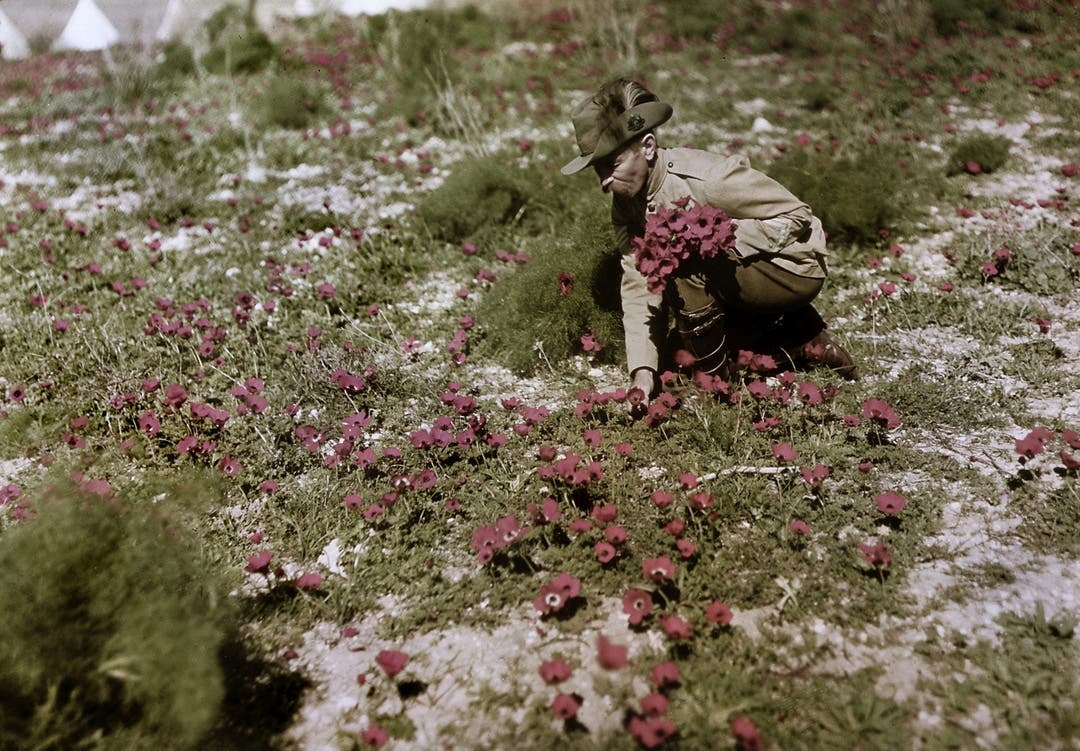The WWI In Color: 40+ Rare And Stunning Photos That Bring History To Life
The First World War, known as the Great War, was one of the most tragic and impactful events in history, stretching from 1914 to 1918 and drawing in millions of people from around the globe.
While we often picture this war in black and white, the reality was far more vivid and intense. This article brings that reality to life by showcasing rare and remarkable color photographs from the era.
Through these colorized photos, the past feels closer and more real, helping us connect with the experiences of those who lived through this extraordinary time.
Diplomatic tensions and the outbreak of war

In the early 20th century, Europe was a powder keg of diplomatic tension, with rivalries between great powers intensifying.
The spark that ignited World War I came on 28 June 1914, when Gavrilo Princip, a Bosnian Serb, assassinated Archduke Franz Ferdinand, the heir to the Austro-Hungarian throne.
Austria-Hungary blamed Serbia for the assassination, declaring war on 28 July. The conflict quickly escalated as Russia stepped in to defend Serbia, pulling Germany, France, and Britain into the fray by early August.
Military strategies and stalemates
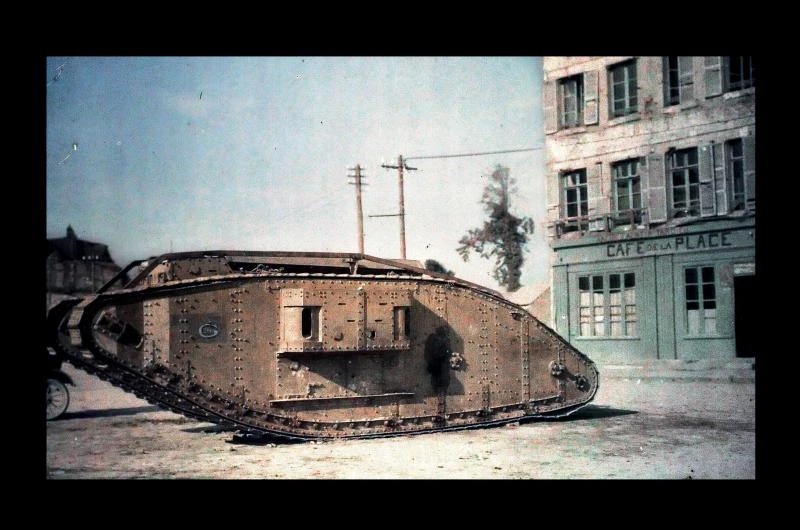
Germany’s initial strategy in 1914 was to quickly defeat France before turning its attention to Russia. However, this plan faltered, and by the end of the year, the Western Front had become a vast network of trenches stretching from the English Channel to Switzerland.
On the Eastern Front, the fighting was more mobile but equally indecisive, with neither side able to gain a clear advantage despite heavy losses.
Expansion of the war
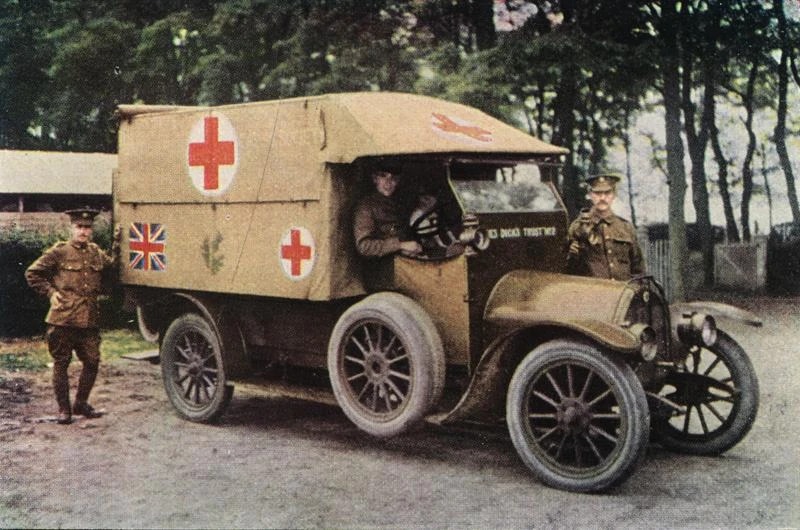
As the stalemate dragged on, the war expanded into new regions, including the Middle East, the Alps, and the Balkans, drawing in countries like Bulgaria, Romania, and Greece.
The United States joined the Allies in April 1917, while the Bolshevik Revolution in Russia led to a separate peace with the Central Powers in early 1918.
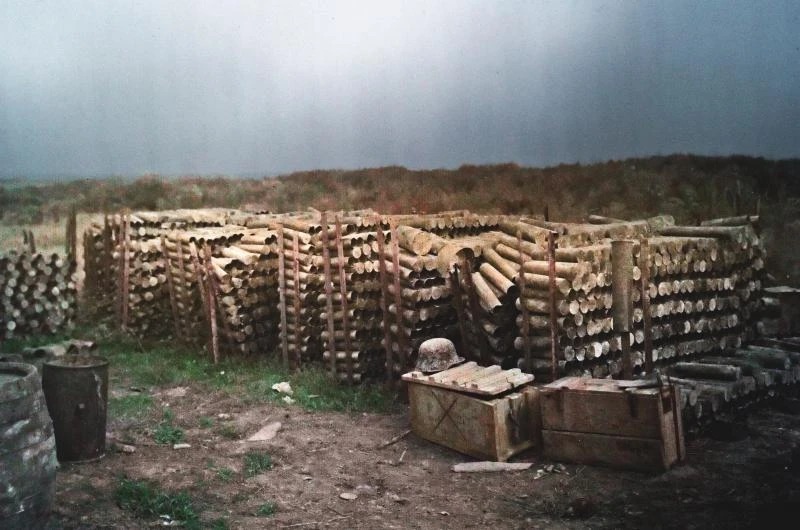
With their Eastern Front secure, Germany launched a final offensive in the west in March 1918, but the effort failed, leaving the German army exhausted.
By late 1918, Germany was isolated, and facing revolution at home, Kaiser Wilhelm II abdicated on 9 November, leading to an armistice two days later.
End of the war and aftermath
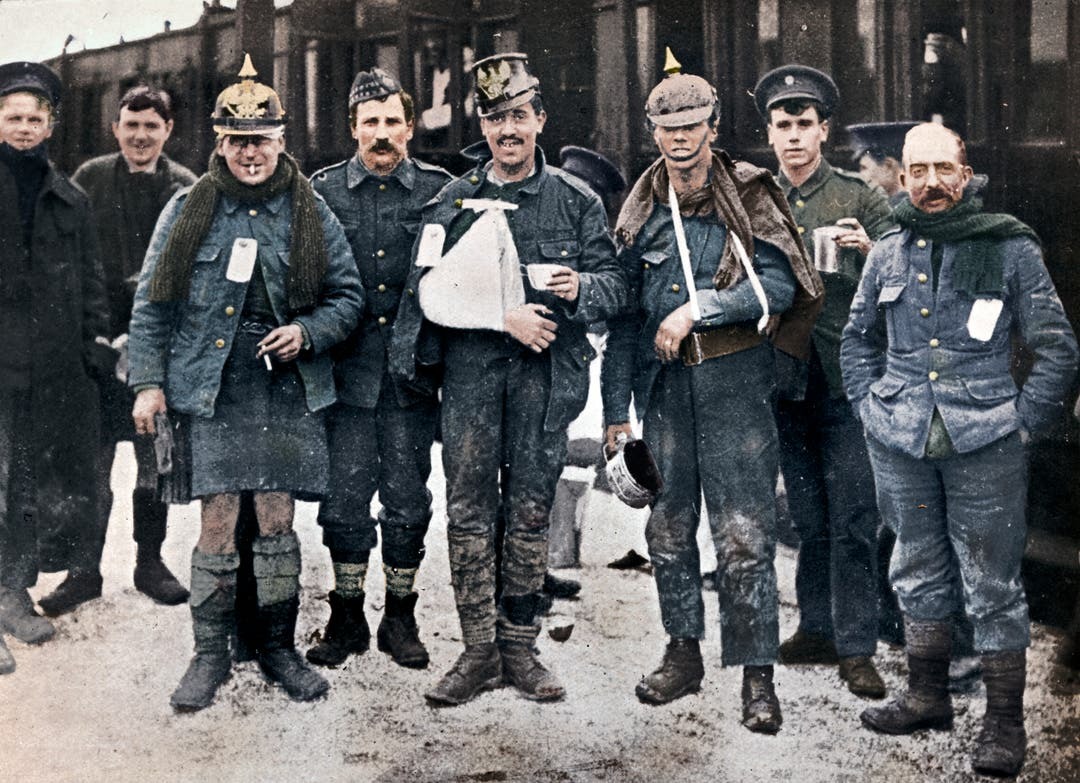
The Armistice of 11 November 1918 brought the fighting to an end, but the aftermath of World War I was complex and far-reaching.
The Paris Peace Conference imposed harsh terms on the defeated powers, most notably in the Treaty of Versailles. The collapse of empires like the Russian, German, Austro-Hungarian, and Ottoman led to the formation of new states, including Poland, Czechoslovakia, and Yugoslavia.
However, the instability that followed during the interwar period contributed to the eventual outbreak of World War II in 1939.
Casualties and lasting impact
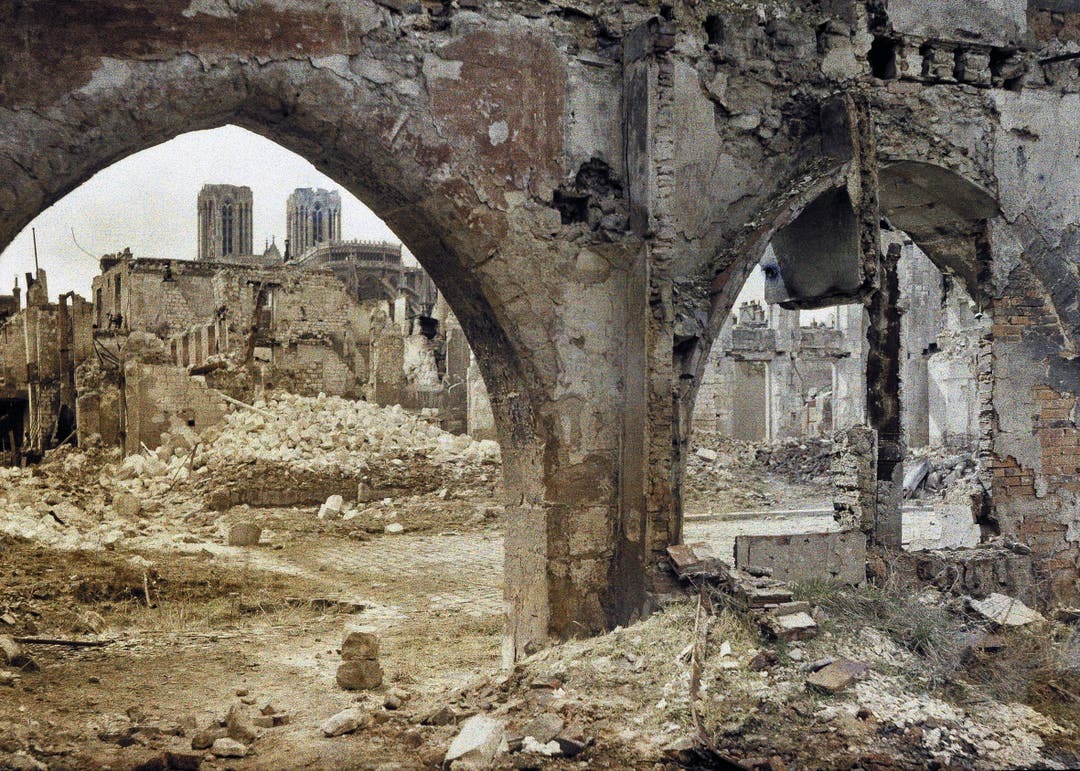
World War I was one of the deadliest conflicts in history, with estimates of 16 million deaths and 20 million injuries.
The majority of casualties occurred on the Western Front, where trench warfare was marked by relentless artillery bombardments, machine gun fire, and poison gas attacks.
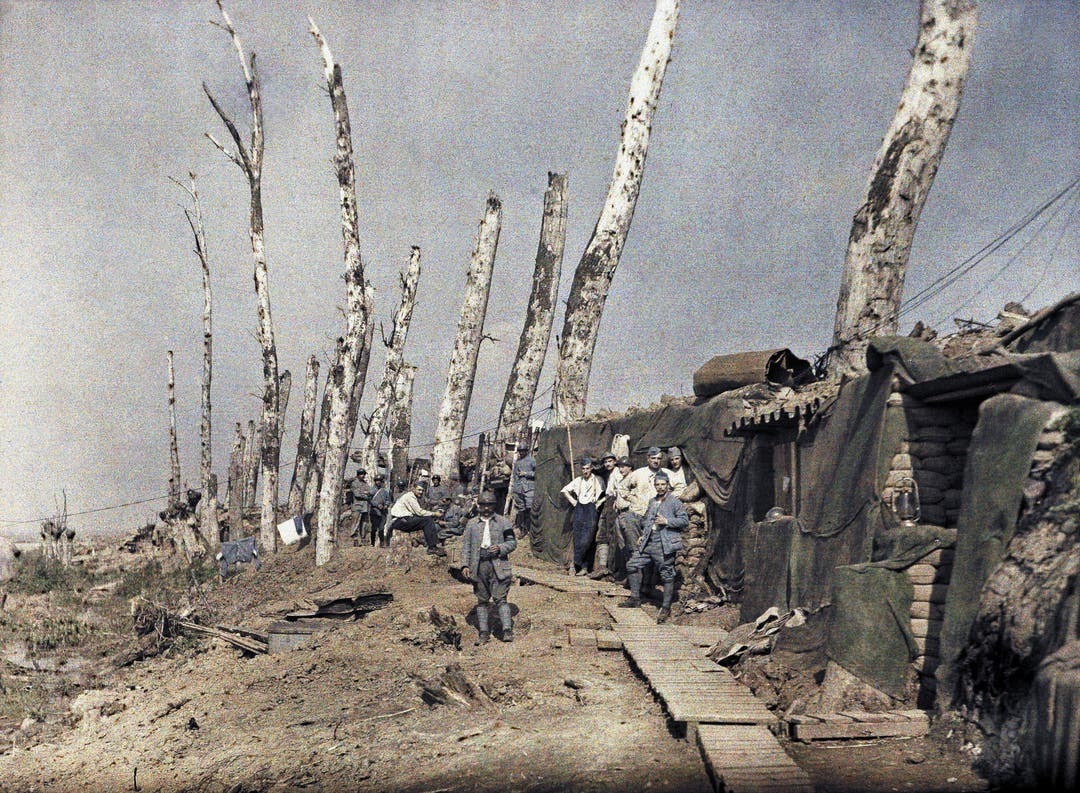
The Eastern Front, though more fluid, was equally deadly. Civilians also suffered greatly, caught in the crossfire and subjected to bombings.
The war’s impact continued long after the fighting stopped, with many soldiers returning home with physical and psychological scars.
Color photos from the World War I
1. Senegalese soldiers on the Western Front in Alsace
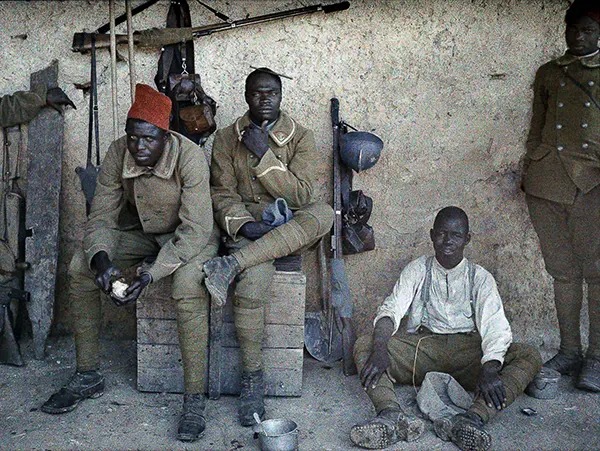
2. French machine gunners amid the ruins of the Aisne battle
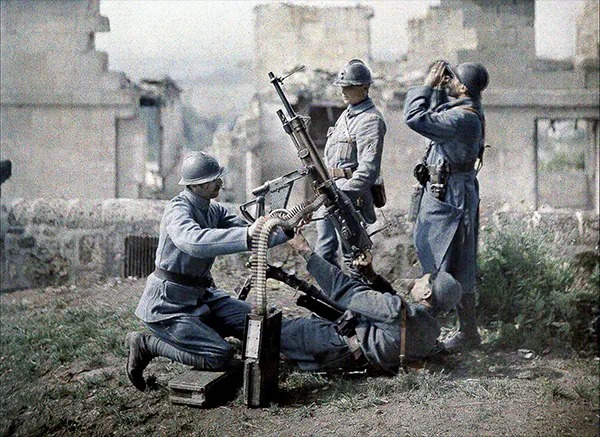
3. Massive crater from the British detonation near Messines
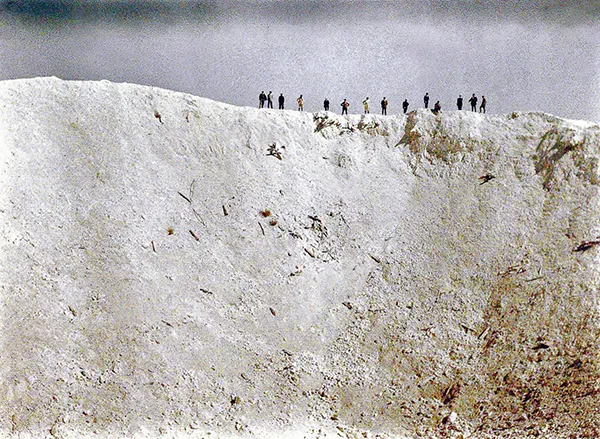
4. Algerian worker in Noyo, France, post-German retreat
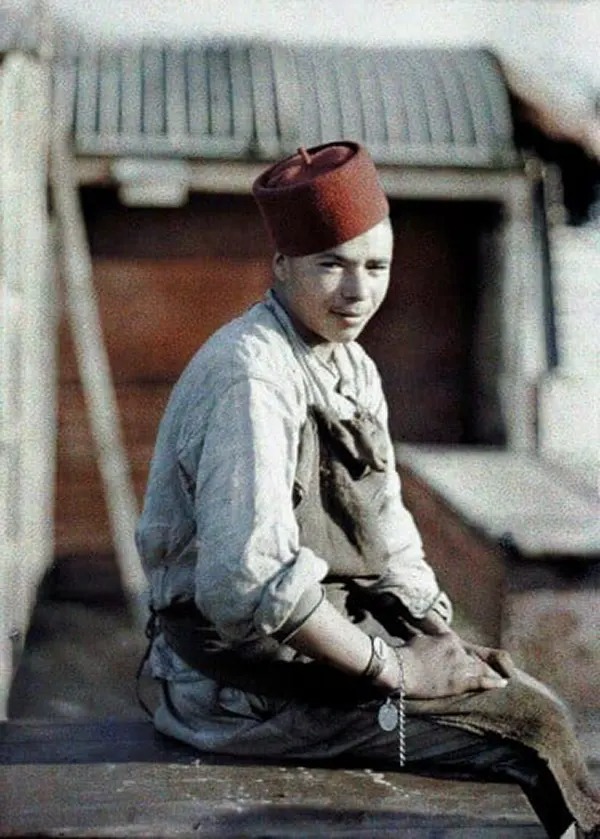
5. Indochinese worker in Soissons, France
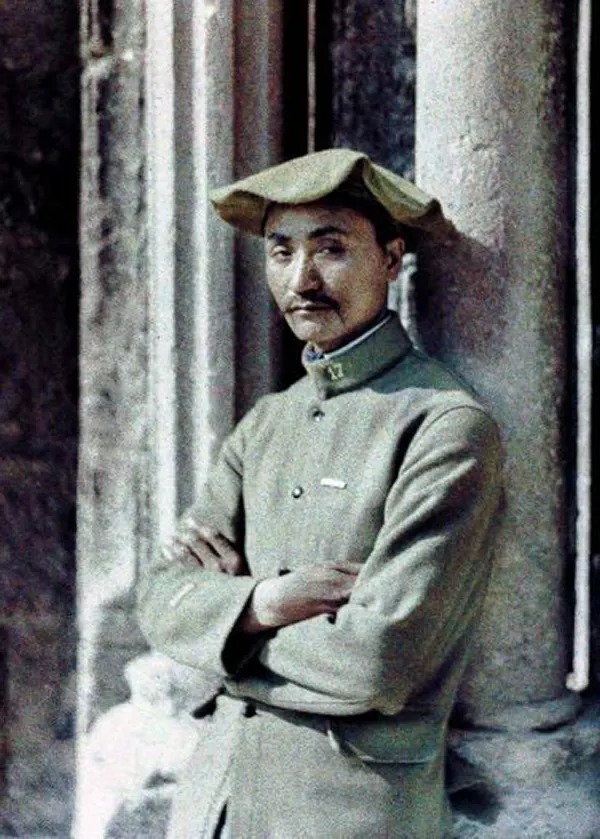
6. African French soldiers preparing a meal on the Western Front
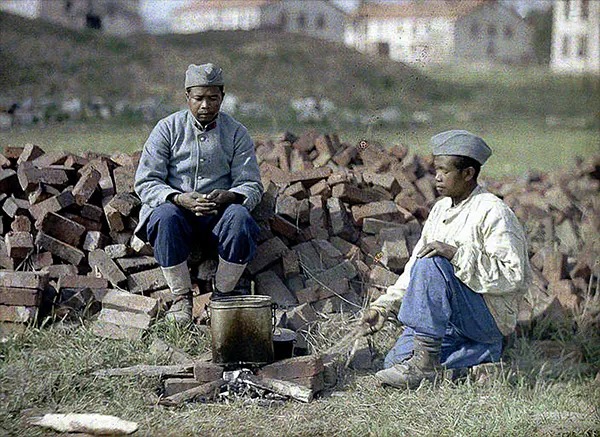
7. Young girl holding a doll near soldiers’ equipment in Reims, France
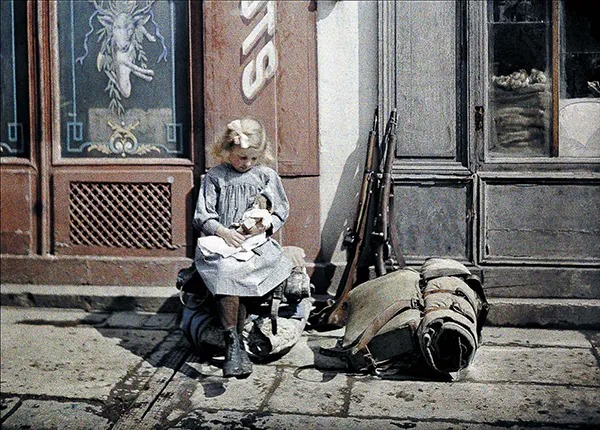
8. 370th Infantry Regiment French soldiers eating soup during the Aisne battle
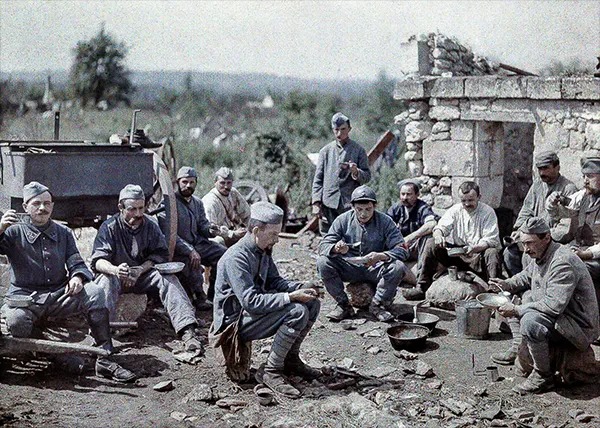
9. French officer inspecting barbed wire defenses in Soissons
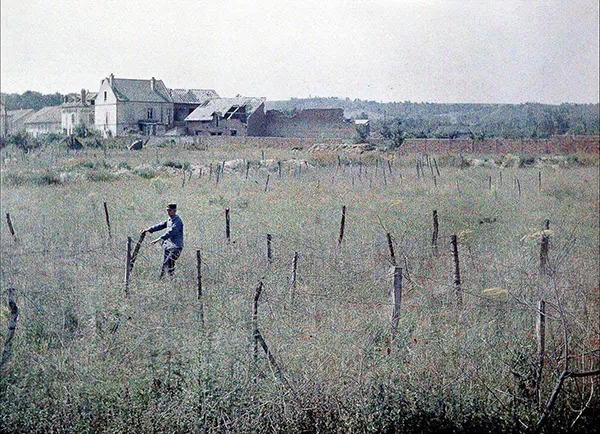
10. French soldiers clearing rubble from a destroyed building in Reims, France
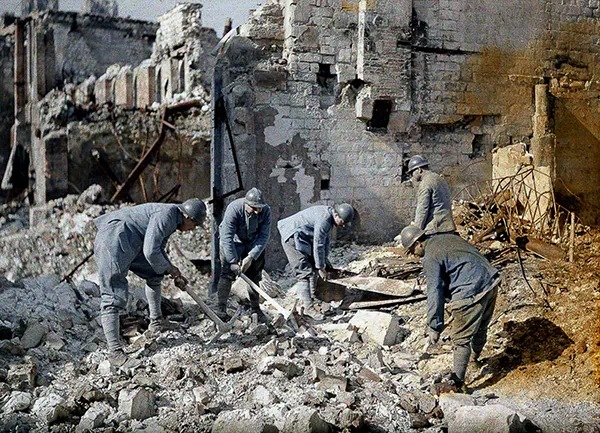
11. French soldiers and horses in the war-damaged Abbey de Saint-Jean-des-Vignes, Soissons

12. Medical team at Field Hospital 55 in Bourbourg, France
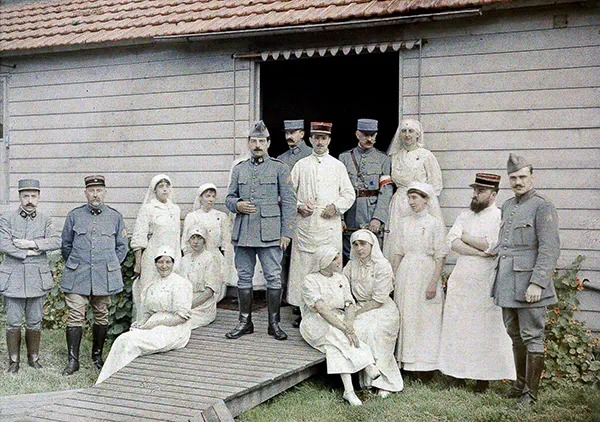
13. Senegalese Bambara soldiers in the French Army at Balschwiller, Alsace
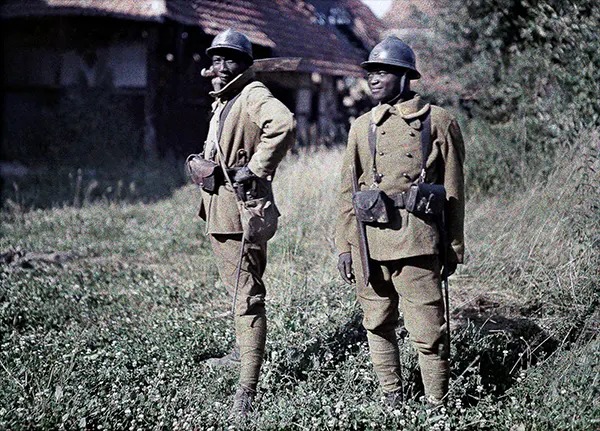
14. French outpost near the frontlines in Hirtzbach, Alsace.
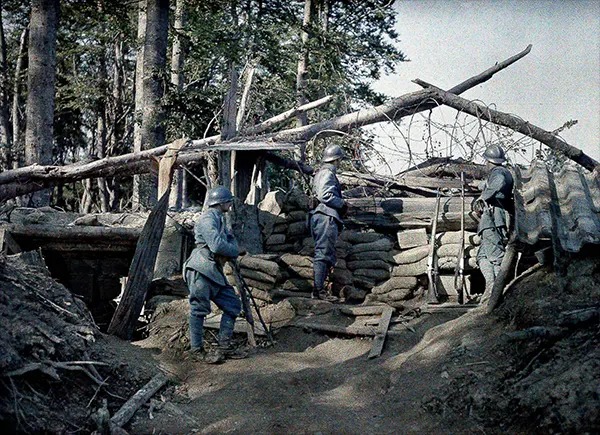
15. Swiss border guards stationed behind the Switzerland-France fence
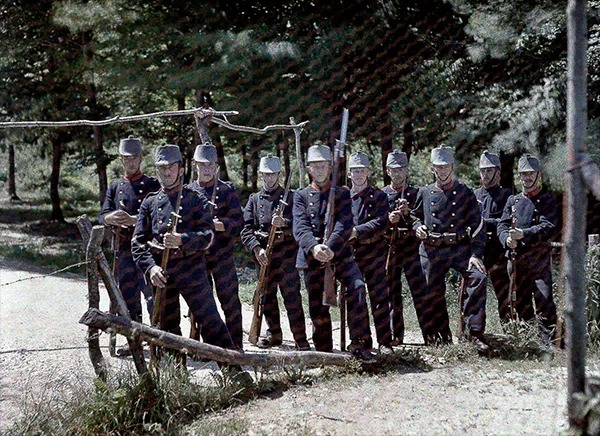
16. French soldiers camouflaging a 370mm railway gun on the Western Front
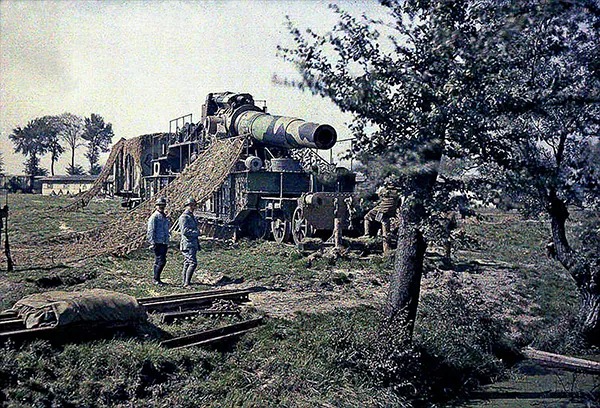
17. Firefighters battling flames from the German bombing of Dunkirk, France
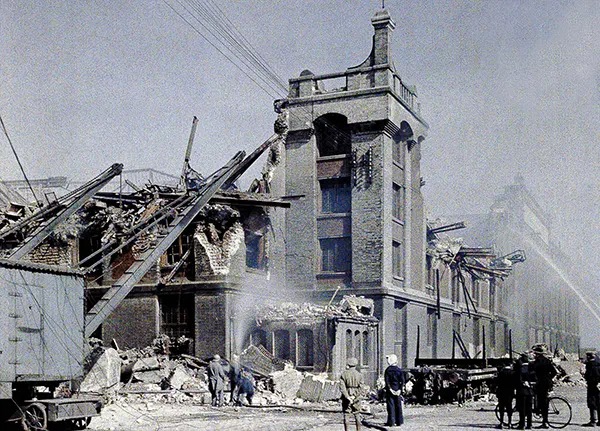
18. French soldier observing from a position on the Western Front in Alsace

19. French soldiers stationed in Hirtzbach, Alsace
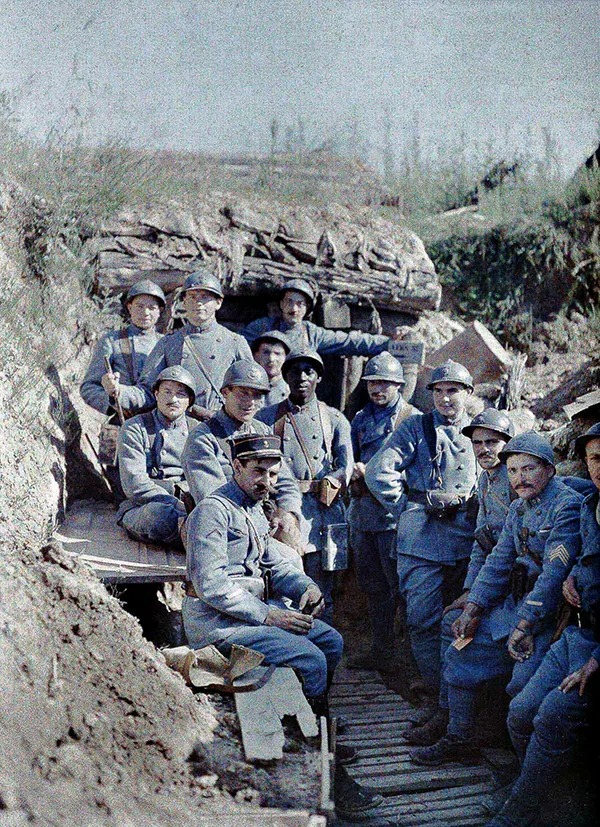
20. Algerian guard stationed on a bridge in Pommiers, France
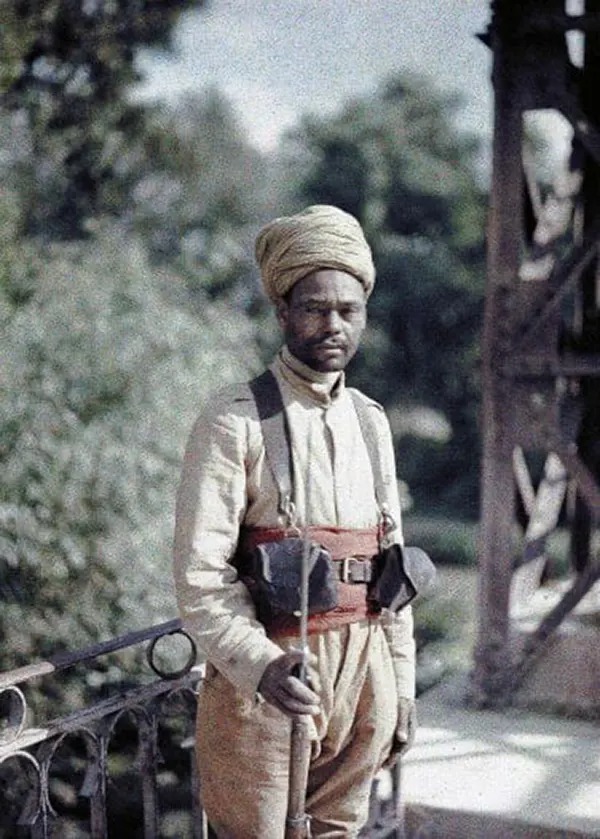
21. News vendor in the streets of Reims, France

22. French soldiers reading newspapers at a kiosk in Rexpoede, Calais

23. French soldier enjoying a loaf of bread in Reims, France
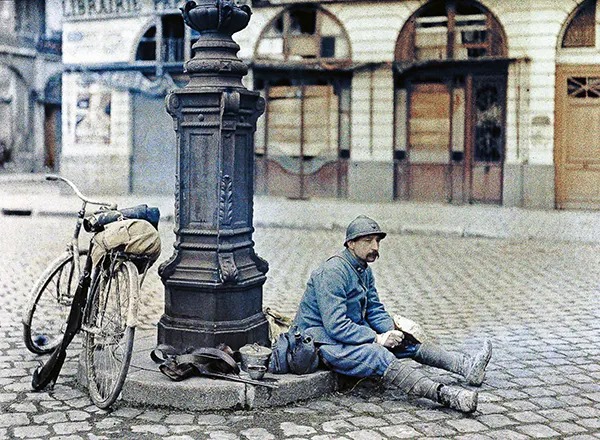
24. French soldiers on a narrow-gauge railroad in a war-torn West Flanders battleground
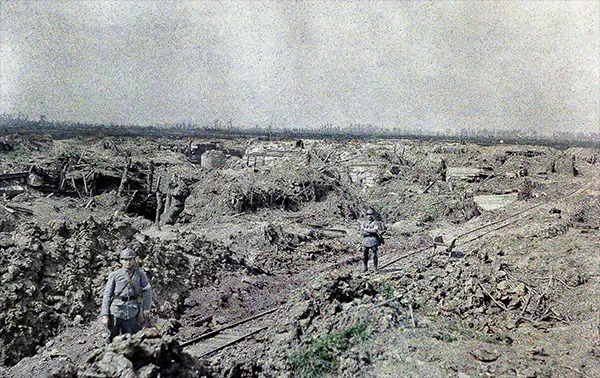
25. Wounded soldiers from Laffaux battlefield at Saint-Paul Hospital, Soissons
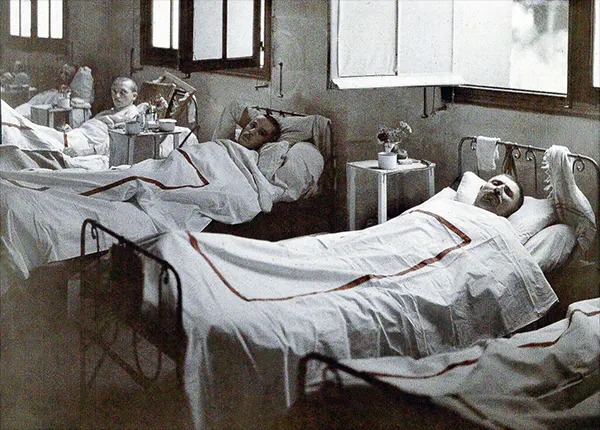
26. French military cemetery on a hillside in Moosch, Alsace
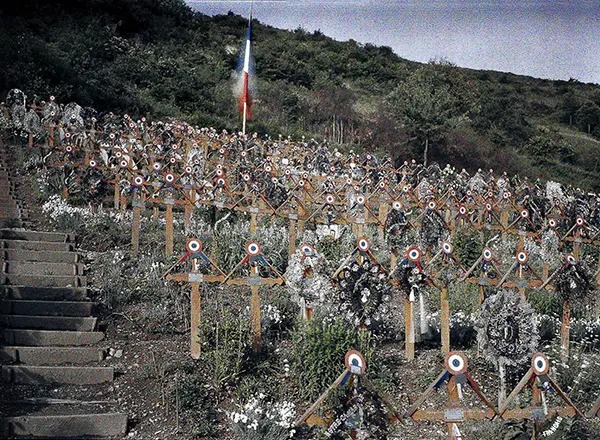
27. Verdun’s devastated landscape after 8 months of bombing, September 1916
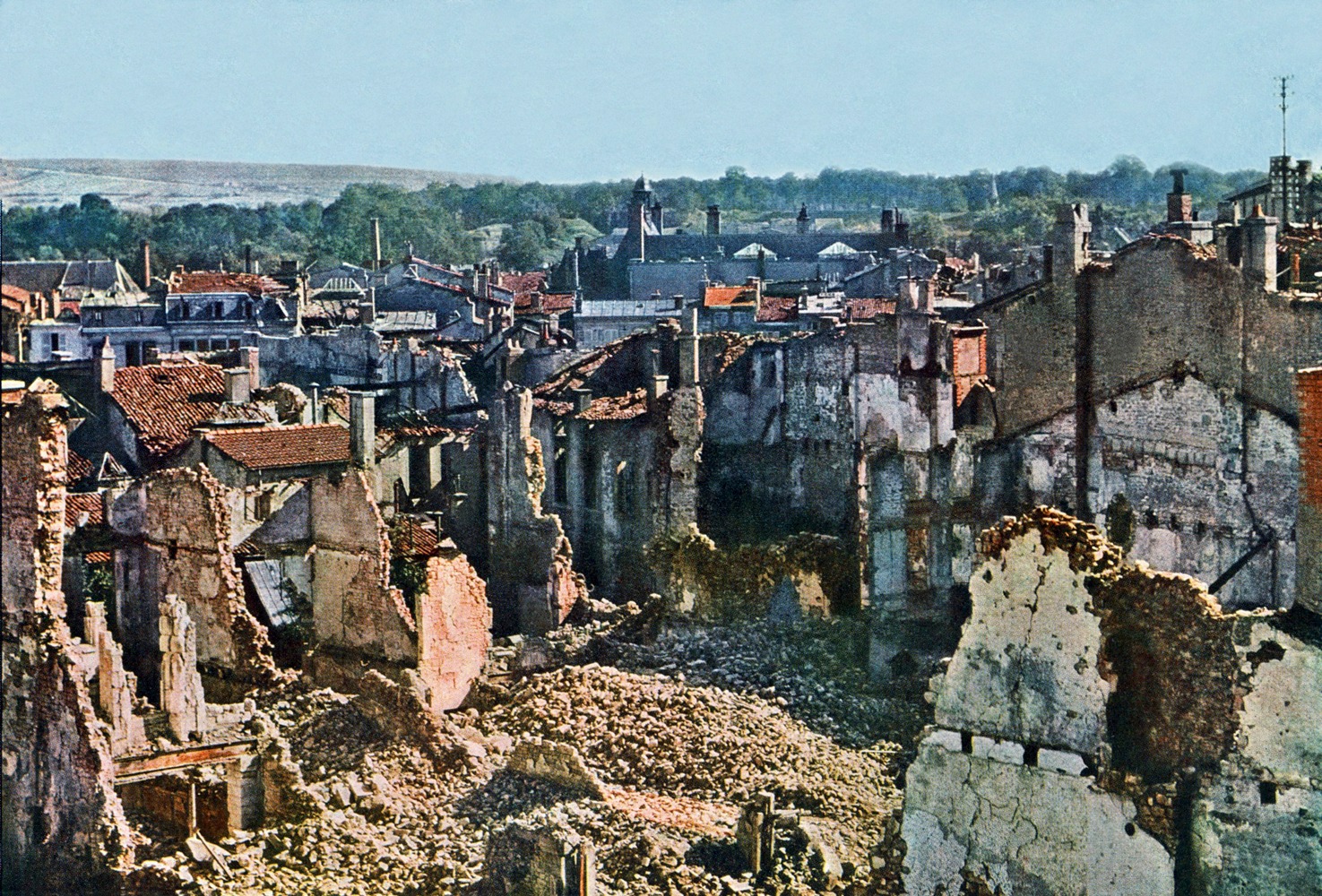
28. French gunners receiving instruction, 1916
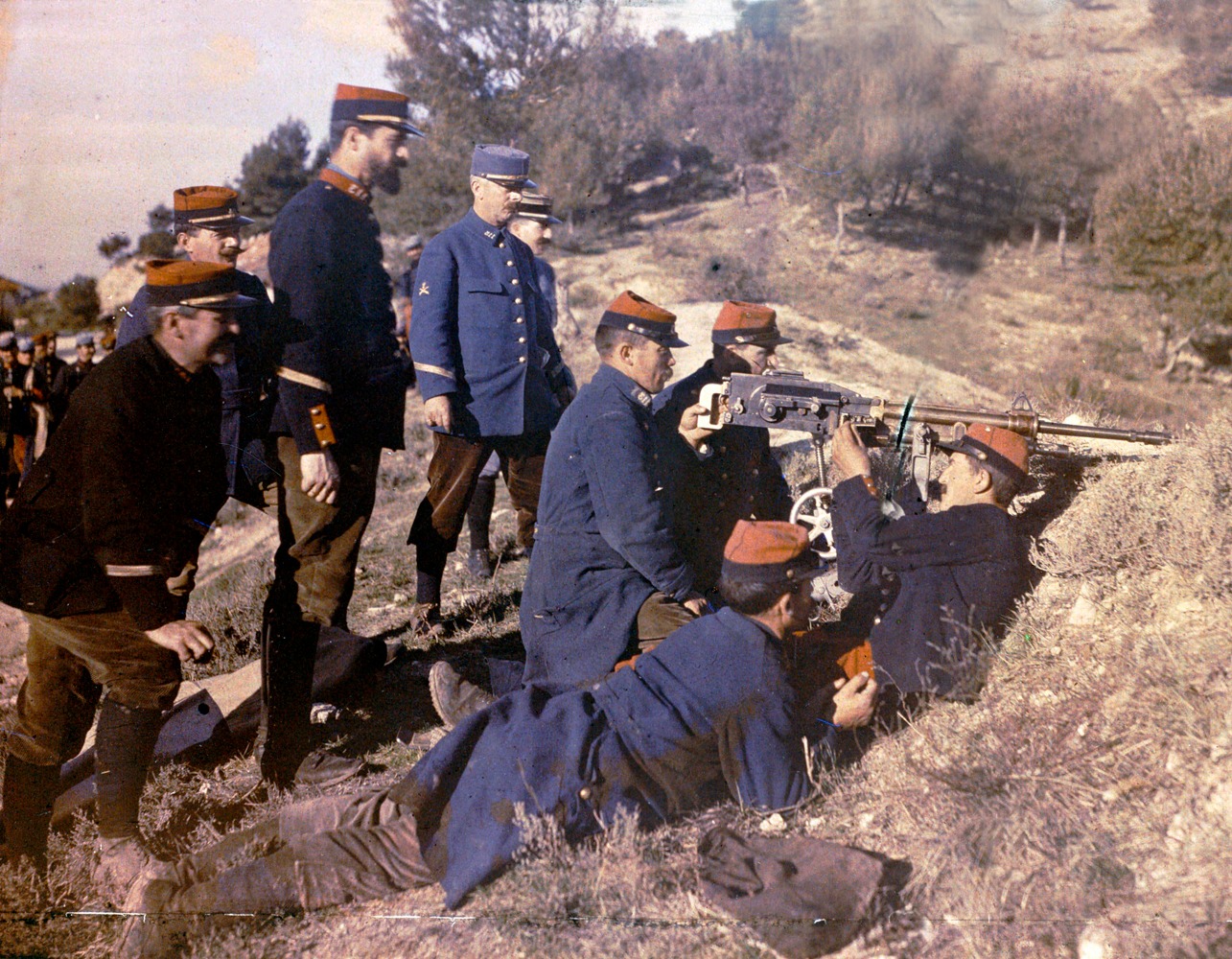
29. French soldier using an acoustic device to track aircraft on the Western Front
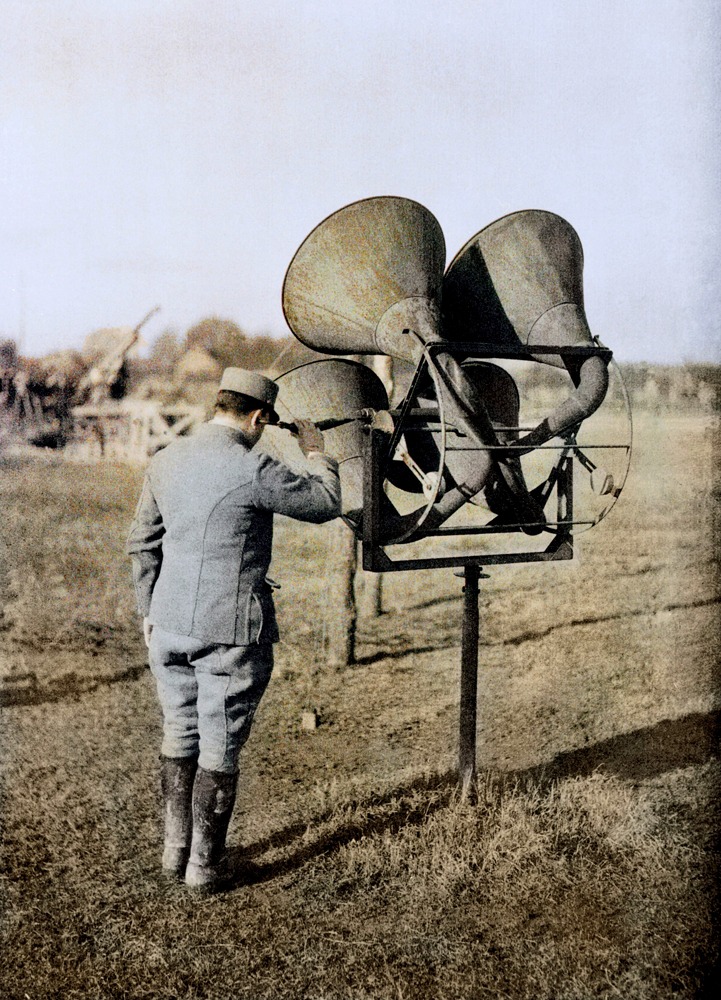
30. Wreckage of a German tank destroyed in a Western Front battle
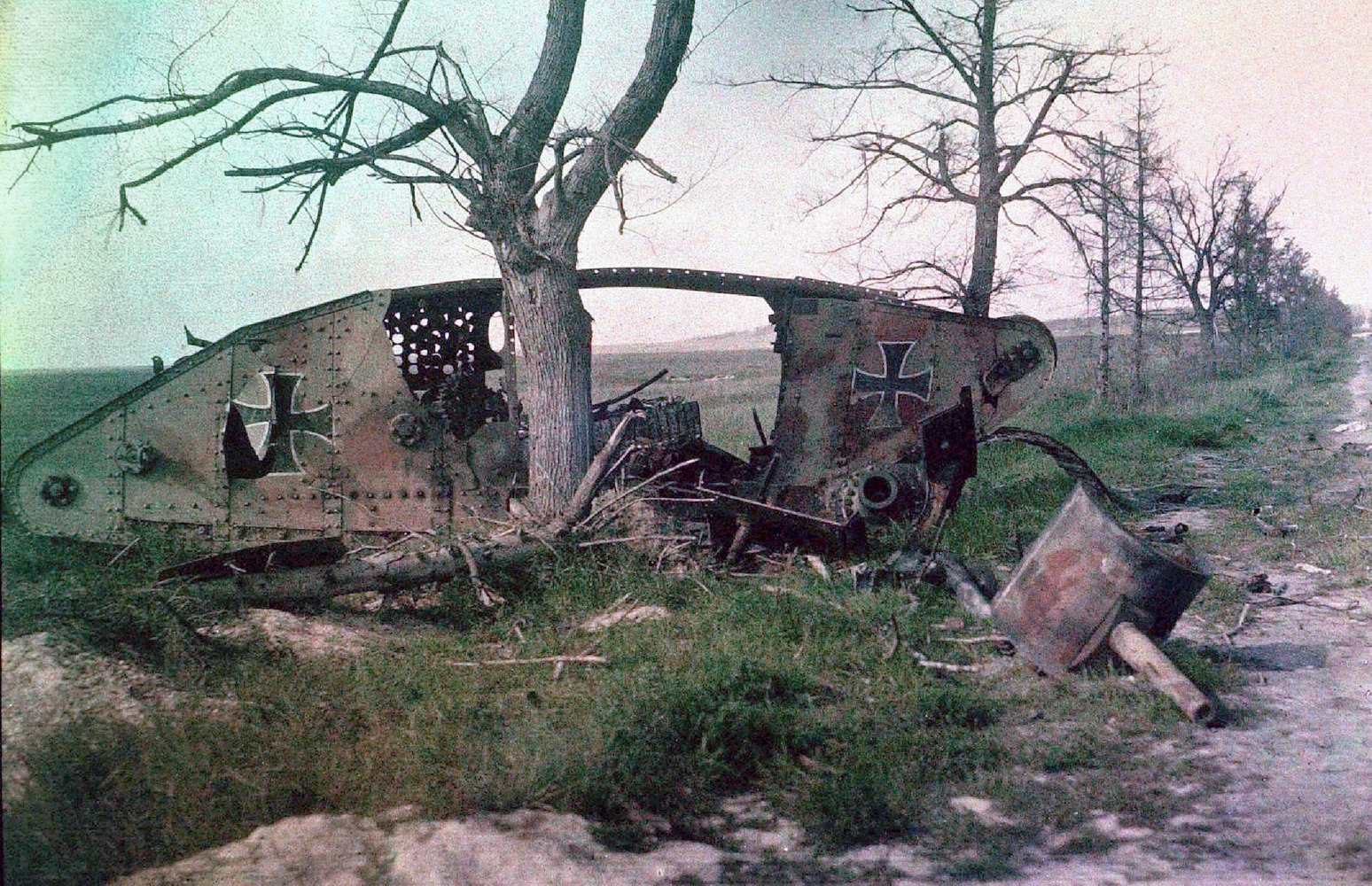
31. Decorated soldier with an artificial limb standing by a cannon in Paris, 1918
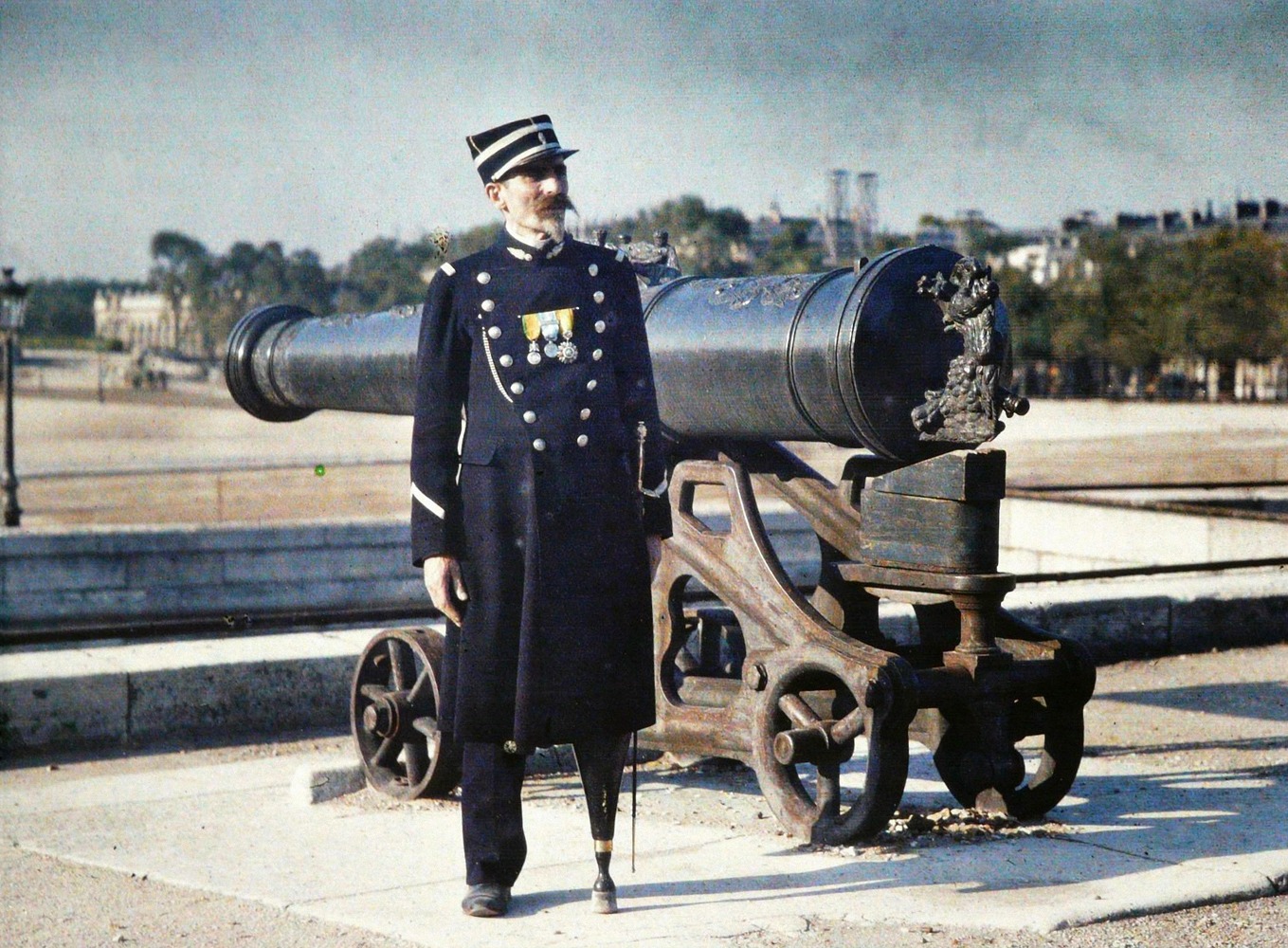
32. Soldiers surveying a devastated battlefield littered with wrecked wagons and craters
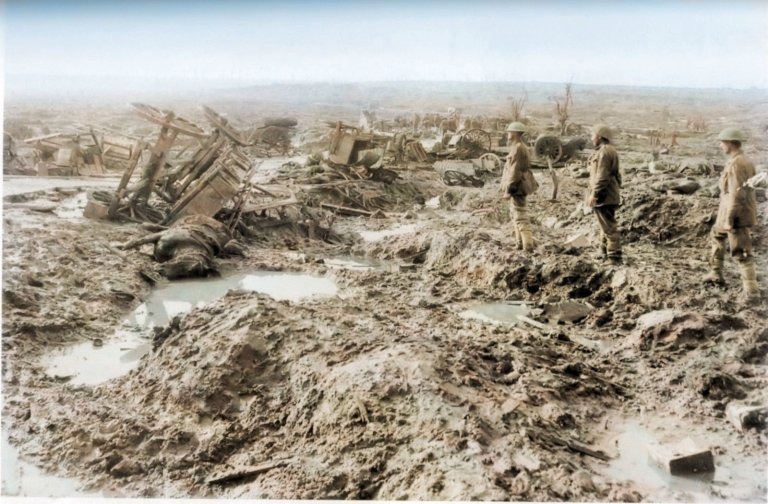
33. Captain Benjamin H Geary VC carried on a stretcher at Achiet-le-Petit, August 1918
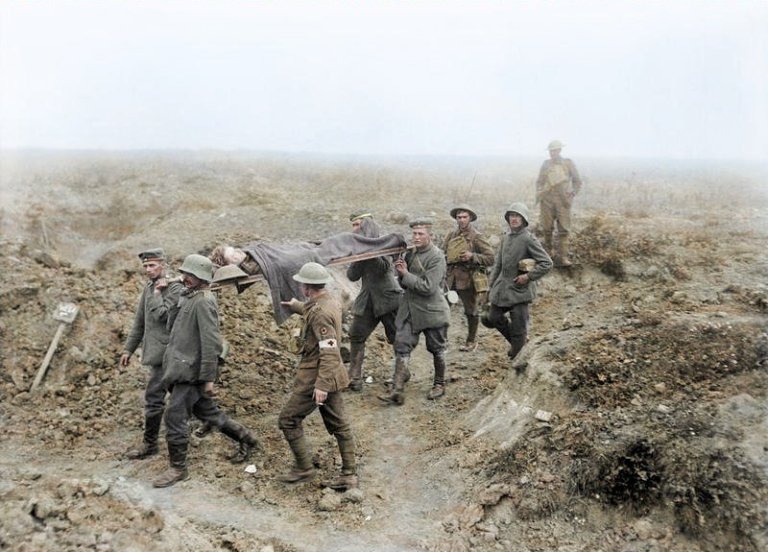
34. Poignant funeral of Sergeant Henry Nicholas, VC, in World War I, France
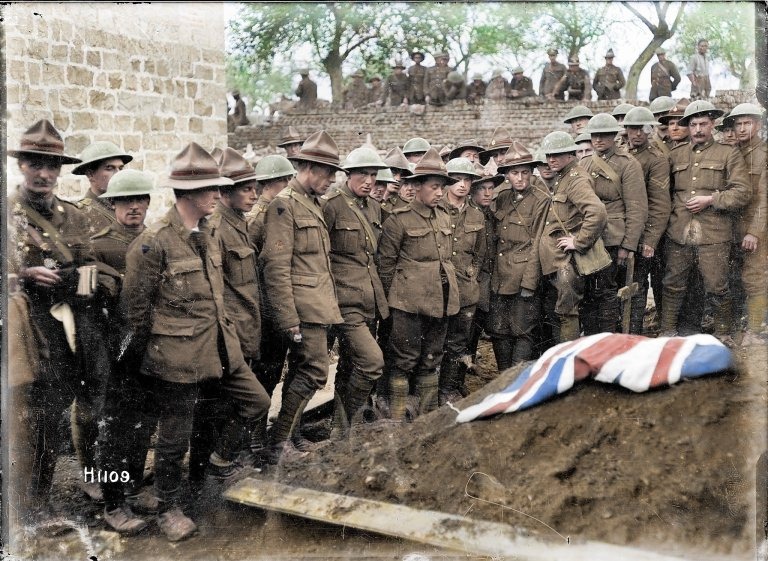
35. 20th Battery Canadian Field Artillery at Neuville St. Vaast, April 1917, with gear-laden horses
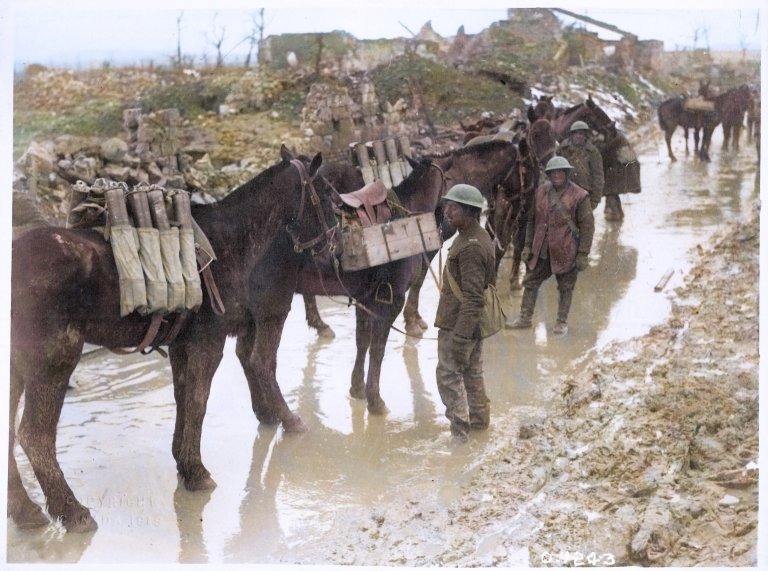
36. German soldiers aboard a tank labeled “Escapade”
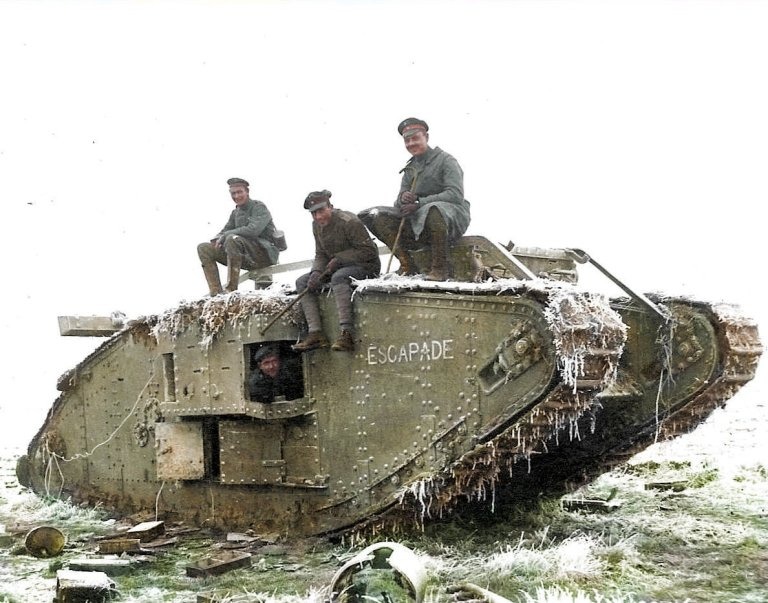
37. Nuns laying wreaths in a field of mass graves
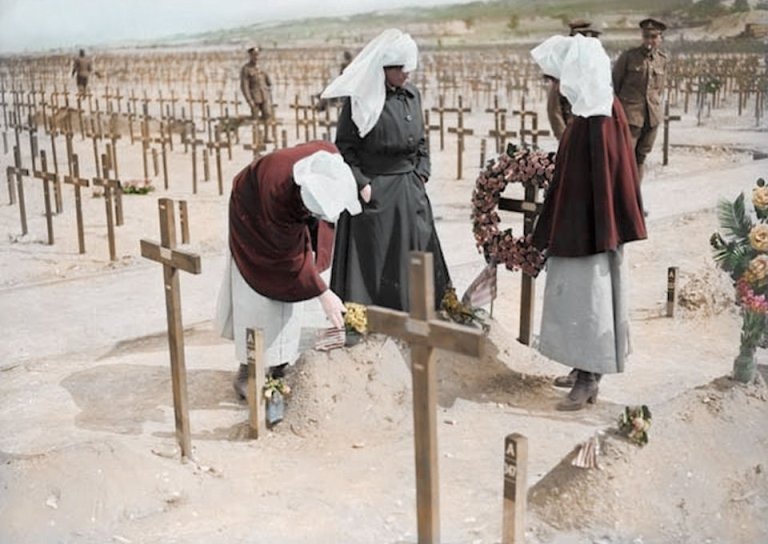
38. Soldiers aiding the wounded at the Battle of Verdun
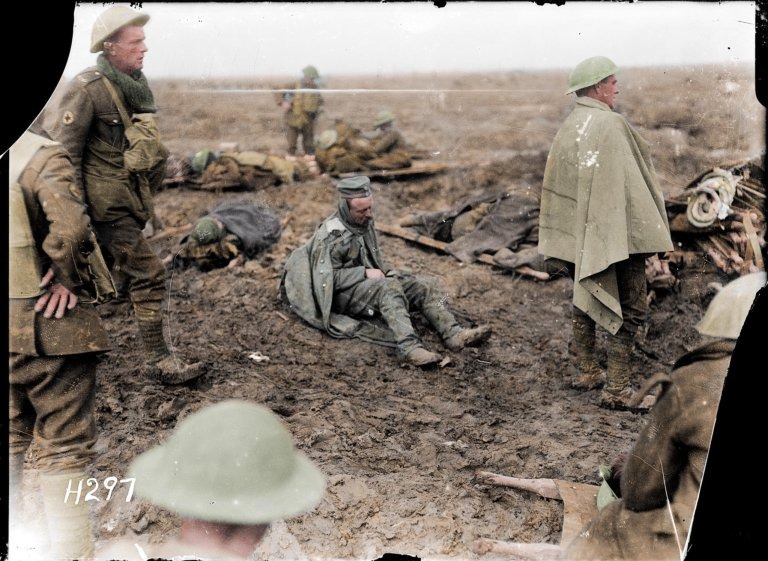
39. Massive shell crater, 75 yards in circumference, at Ypres, Belgium, October 1917
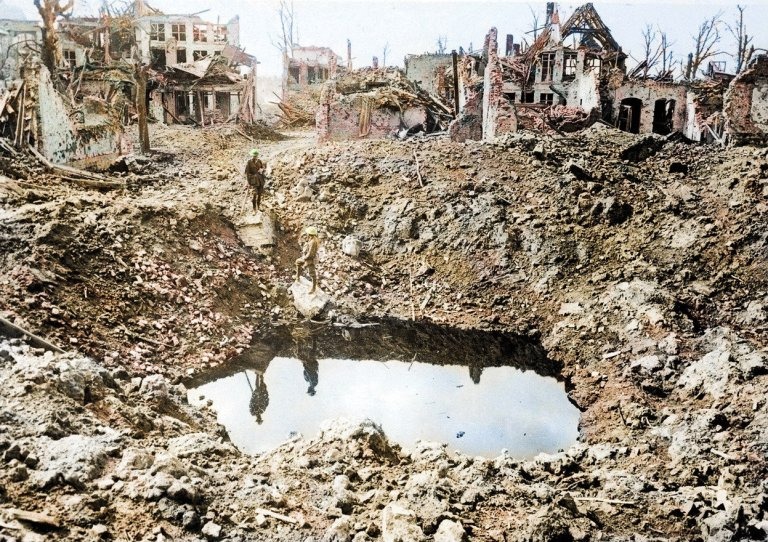
40. Lucky British soldier proudly displaying his damaged helmet, Western Front, 1917
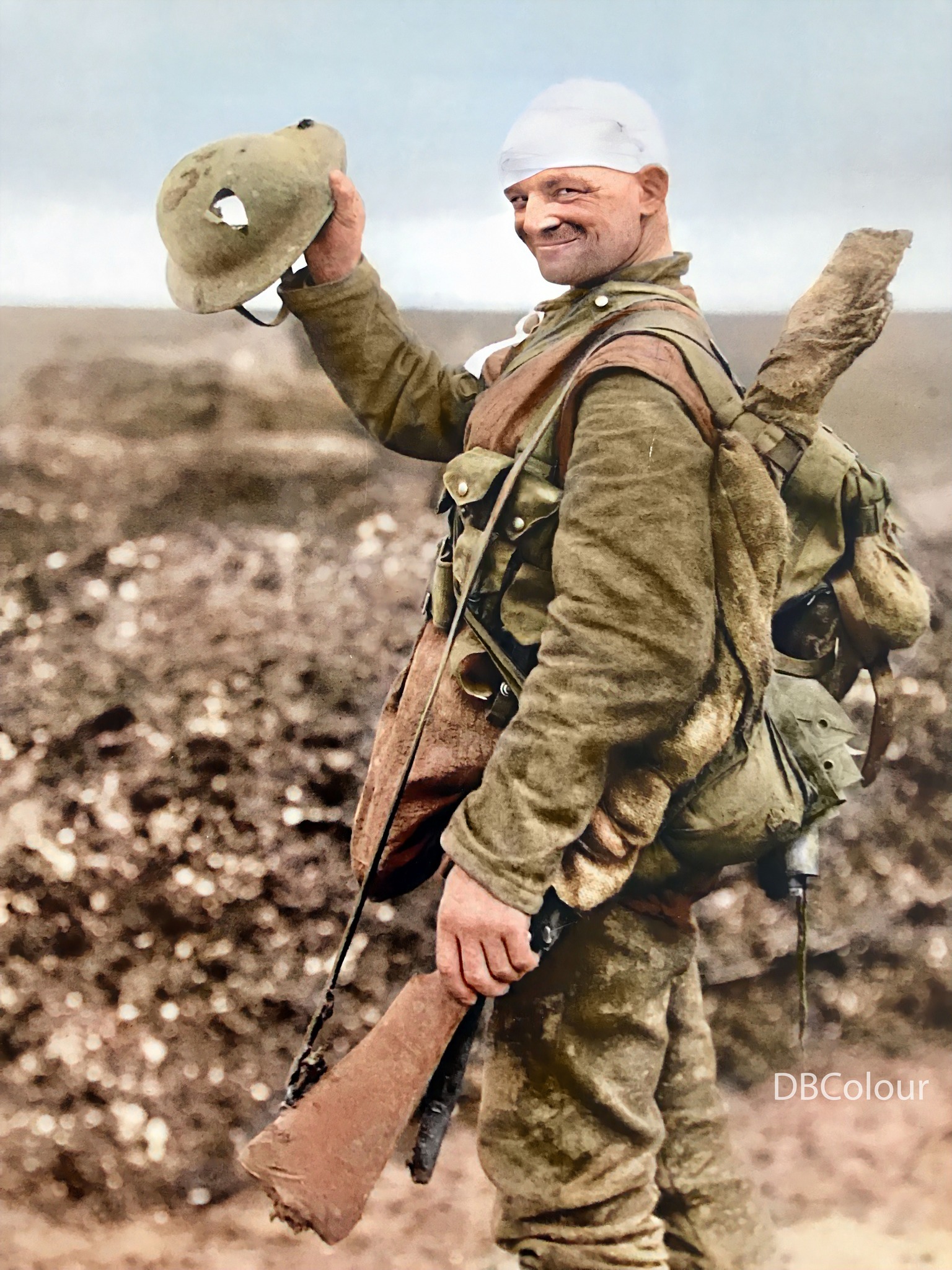
41. A camp in Egypt of workers from the British Chinese Labour Corps recruited to participate in the Middle East campaign

42. Senegalese soldiers in the French Army line up for lunch in Saint-Ulrich, France
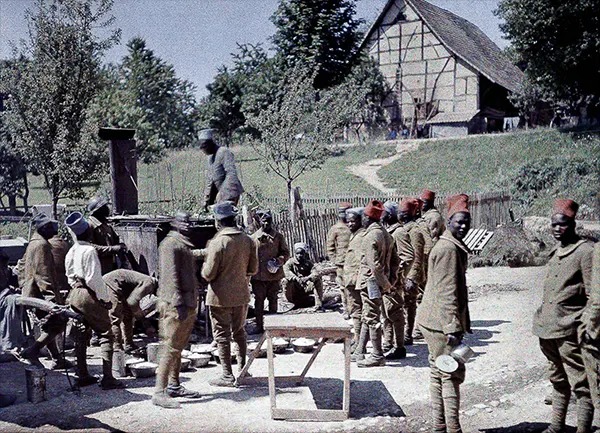
43. French soldiers in Verdun endure the horrors of trench warfare, a strategy that led to rampant disease, shell shock and mass casualties during WWI

44. Soldiers in France ready to charge into battle, in an Image titled “Fighting through the night at Mory.”
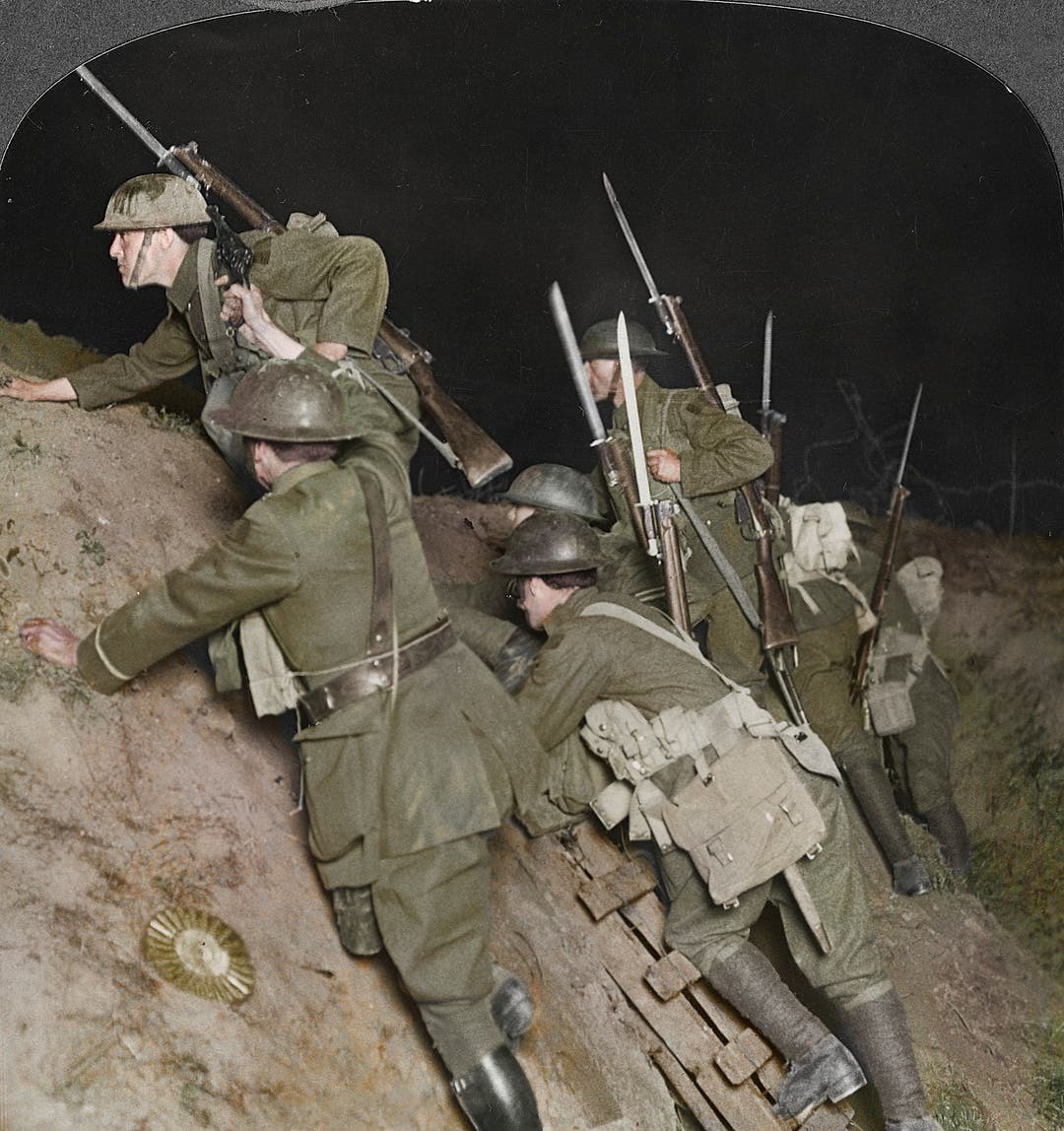
45. Troops in Passchendaele, Belgium, carry a wounded soldier to a medical post for treatment
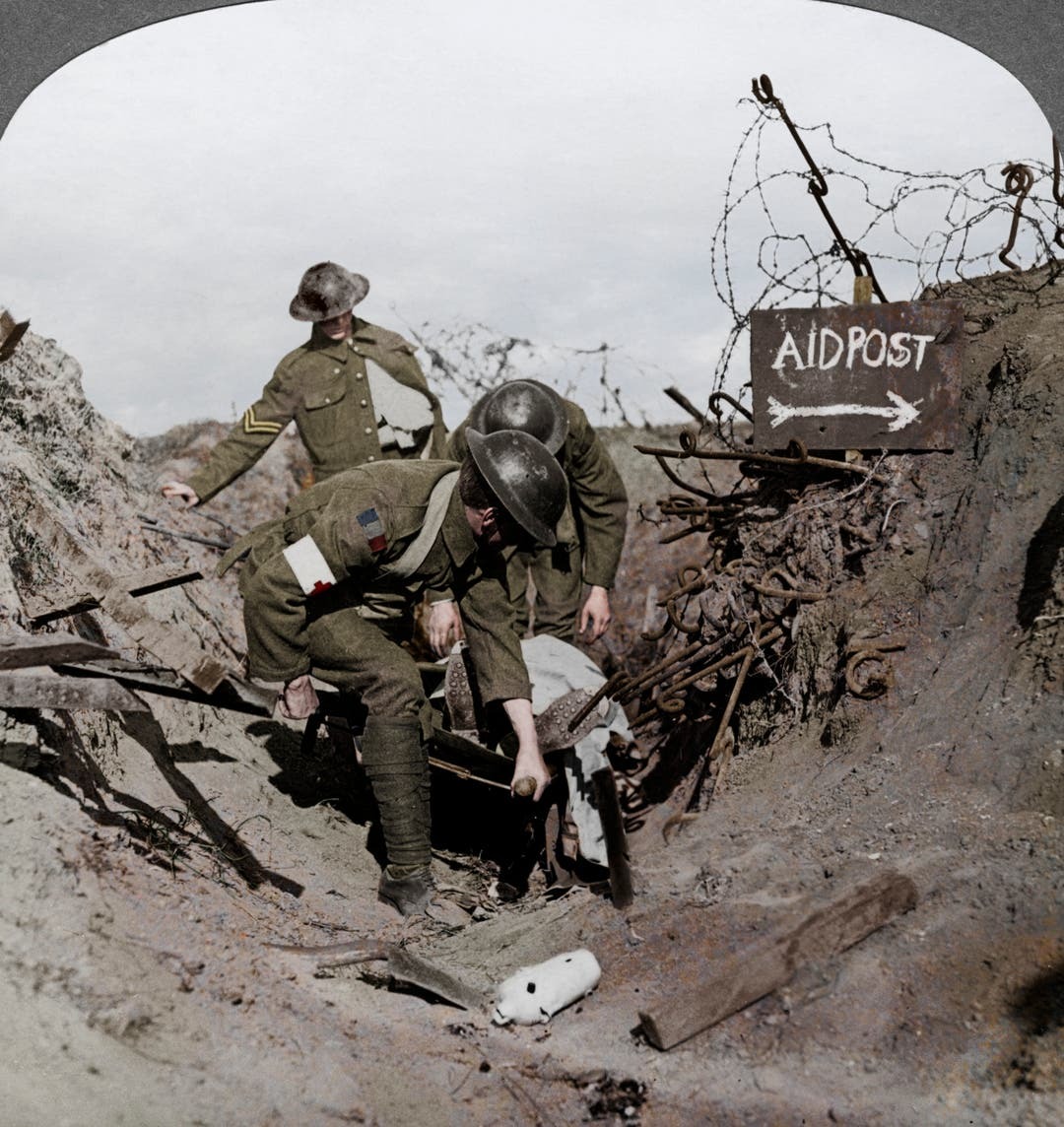
46. George “Pop” Redding, an Australian soldier from the 8th Light Horse Regiment, picking flowers during the war against the Ottoman Empire in the Middle Eastern theater of World War I. 1918. Palestine
